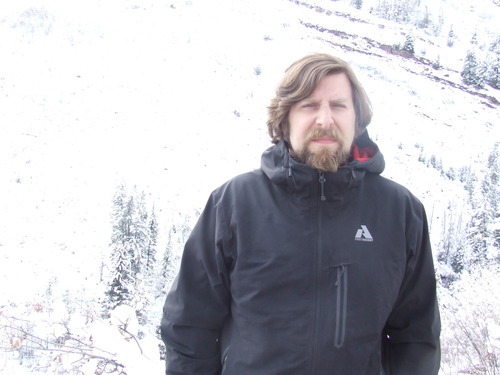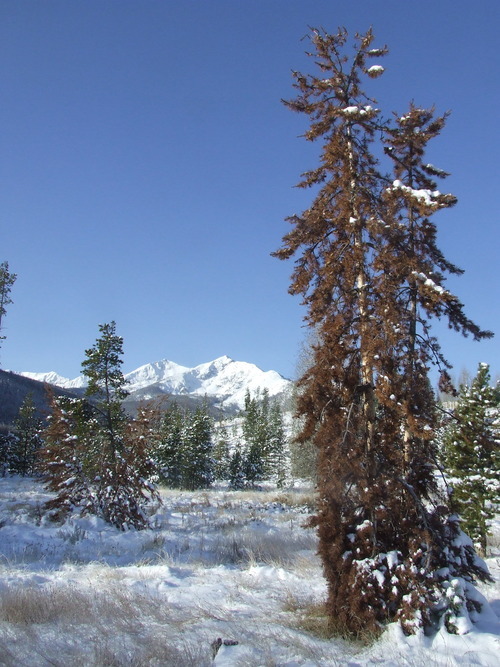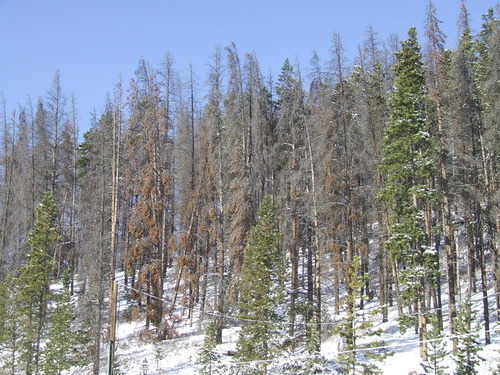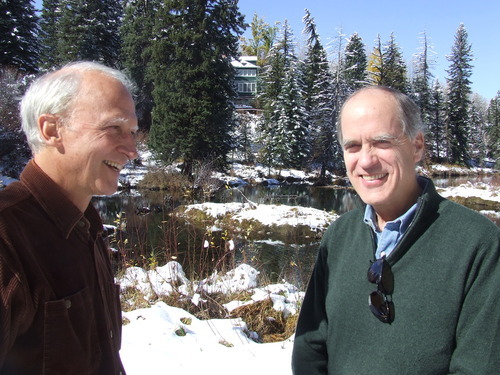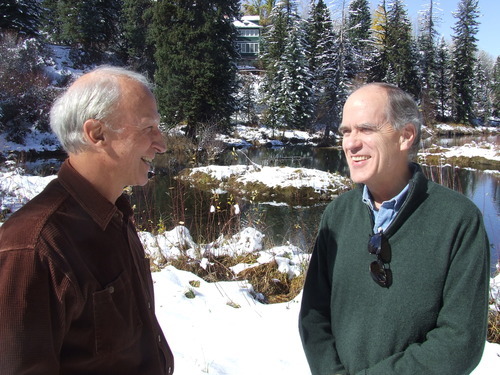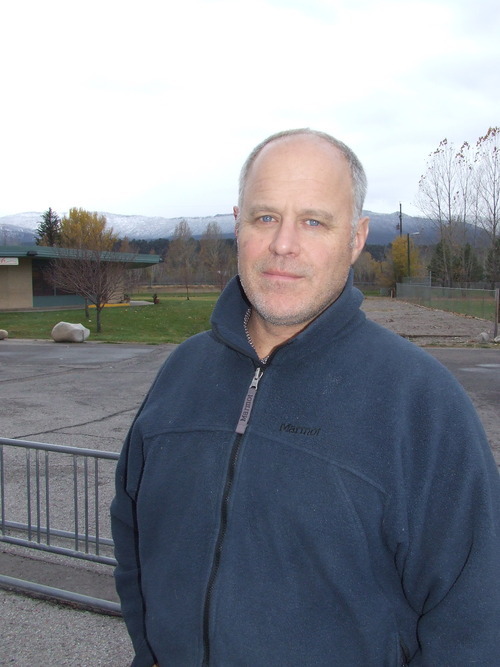This is an archived article that was published on sltrib.com in 2011, and information in the article may be outdated. It is provided only for personal research purposes and may not be reprinted.
Aspen, Colo. • Here is the next front in America's fight for its Western forests.
Too late to head off a wave of climate-fueled beetles that have altered the evergreen landscape for generations — if not forever — foresters still believe they can rejuvenate this resort town's namesake. They say the white bark and fluttering yellow heart-shaped leaves that announce fall in the Rocky Mountains are due for a pruning.
It's chain-saw environmentalism, and some of the West's most ardent wilderness lovers have signed on. They face strong opposition from groups that believe Mother Nature can best repair her own, and their struggle over how best to legally protect untrammeled wild lands will profoundly shape the future of these hills.
"It's no longer as easy as just saying wilderness is good and everything else is bad," said John Bennett, a former Aspen mayor and current executive director of the advocacy group For the Forest.
Will aspen shoots — food to elk and other cherished Rocky Mountain wildlife — keep springing from the slopes in a warming and drying region? Can they without human help?
Government foresters want to start cutting down swaths of century-old aspens in hopes that young "suckers" will sprout from the roots to build a new forest. It's how many of the aspens would have reproduced naturally during the 1900s had Americans allowed fire to scour more of the old trees from the land.
Today, there is some urgency because a widespread collapse that accelerated during a 2004-08 drought foreshadowed dire predictions of climate-linked losses over the next 50 years. The die-off blighted nearly a fifth of Colorado's aspen stands, researchers say, thinning about a quarter of the forest crown in most of them with precious little regrowth.
Cutting aspens now, in the absence of drought, could regrow vigorous young trees before the next dry spell strikes.
"We certainly don't have any silver bullets," said Jim Worrall, a U.S. Forest Service Forest Health Protection pathologist in Gunnison, Colo., who studied the past decade's so-called Sudden Aspen Decline syndrome. "But we do know that aspen stands less than about 40 years old were not really affected by Sudden Aspen Decline."
Thus, cutting for regrowth is a prescription that's taken firm root with foresters and opened a divide among environmentalists who might have unified against logging — if not for the wild card of climate change.
"Nature knows best," said Sloan Shoemaker, executive director of Colorado's Wilderness Workshop and a skeptic of the rush into forest interventions. He supports efforts to clear beetle-killed pines posing fire hazards and watershed threats around communities, but believes the aspens and other trees deep in the woods should adapt on their own.
"History is writ with many examples of humans monkeying in natural systems that have gone awry."
That's why Shoemaker and others with a more traditional wilderness ethic favor a hotly debated revision of Colorado's roadless forest rule. The state and U.S. Forest Service are considering local changes to a nationwide 2001 rule protecting pristine forests from road construction, and one of several proposals under review would tighten restrictions considerably. It would generally ban tree cutting on 2.6 million acres of "upper-tier" protection zones — two-thirds of the state's roadless areas.
Millions of acres of dead pines and spruces naturally give aspens new areas to colonize, Shoemaker said, while foresters seem fixated on old aspen stands in areas that aren't likely to support them in the future. They want to prevent oak brush and other dryland species from taking over slopes that he believes are becoming ill-suited to aspens.
"Trying to freeze an aspen stand in time," he said, "is fighting nature."
Sitting pretty
Others who love wilderness, and indeed moved here to live among it, point to the bark-beetle infestation — which stripped more than 6 million acres of Colorado evergreens — as evidence such hard-line protections are outdated.
"I'm a total wilderness advocate," said Tom Cardamone, who moved here to work on a student-led wilderness campaign in 1972 and now directs the Aspen Center for Environmental Studies [ACES]. "Also, I recognize the increasing importance of hands-on forest management."
ACES has a staff of naturalists whose mission statement seeks to nurture lifelong commitments to the Earth while "restoring the balance of natural communities." Defining and championing proper balance can be difficult in a resort community where most residents moved because they liked things just the way they were — a problem Cardamone calls "the challenge of the perception of the pristine."
If a place looks nice and attracts hikers and mountain bikers, he said, they don't necessarily weigh whether its ecology is out of whack. Locals have battled the center's efforts to restore a stretch of the Roaring Fork River from gravel mining and an alpine bog from peat removal, he said, because the areas remained pretty. Both projects went forward, and now both are hailed as ecological successes.
So it is with struggling forests, Cardamone believes. Residents don't like the idea of roads and heavy equipment trudging through pristine wilderness, but "I'm also concerned about the damage of climate change to pristine wilderness."
The bark beetles that have munched through at least 40 million acres of Western evergreens since 1997 served a warning. Aided by warming winters and lengthening summers, they attacked forests that were effectively overpopulated. Individual trees competed for soil moisture and daylight to steel themselves against the onslaught, and when it was too late for people to react on a landscape level, foresters started thinning trees in an effort to save favored recreation spots or reduce fire hazards.
The question now is whether active management would avoid a similar collapse among another key forest species, or whether it's futile to play God. Which lesson should be taken?
Dangers of drought
Aspens host their own species of native bark beetles, and those can find heightened success during droughts. But it is the drought itself — heat coupled with drying soils — that scientists believe threatens to shrink aspen range, currently stretching along the Rockies from Mexico to Alaska.
The Forest Service's Rocky Mountain Research Station has used greenhouse-gas projections to estimate that up to half the suitable aspen range in the central Rockies will vanish under something like permanent drought by 2060, eliminating low-elevation stands.
Some ecologists believe aspens are resilient, though, and argue that something besides logging could help them thrive.
"The prime culprits are the rising elk populations in the West and, in some cases, livestock," said Paul Rogers, director of Utah State University's Western Aspen Alliance. Hunting more elk, restoring wolves to push them around and better managing livestock, he said, would help aspen sprouts survive in many places.
Rogers doubts Sudden Aspen Decline is as widespread as others say. He doesn't question that, for instance, 17 percent of Colorado's aspen stands suffered in the past drought, but he doesn't believe the roots are dead in most of those. Protect the areas from overgrazing and browsing, he said, and many would spring back. Aspens have expanded and contracted with previous climate shifts.
Logging trees, as the Forest Service wants, would stimulate new growth, Rogers said. But none of the sprouts would climb past "mouth-high" if wildlife and livestock aren't managed accordingly.
"Don't do anything," he warned, "unless you have a way to protect [new growth] afterward."
Buying time
If fire suppression has built aspen forests that are unnaturally old and uniform in age, shaking them up makes sense to Cardamone. Doing so might stimulate young aspens and buy the forest time for humans to slow climate change.
Roadless protections for their own sake, he said, aren't the ultimate goal anymore.
"Road or no road, if all the trees are dead because we didn't do something wise," Cardamone said, "we may regret that."
That's the plea echoing around the White River National Forest, which surrounds Aspen and shelters the nation's largest elk herd. District rangers and Forest Supervisor Scott Fitzwilliams fear that if public pressure leads their agency bosses to choose the most restrictive alternative for their new roadless rule, the forest will shrivel. It's not even about roads, he said, because the agency could cut trees without building any — if the roadless rule allows.
"We're losing our aspen pretty quickly in this part of the world," Fitzwilliams said on a recent drive into the Divide Creek Basin. And more than half the forest there is aspen, mostly tall, stout, old.
Eighty percent are mature to "overmature," he said.
Fitzwilliams drove up dirt roads past elaborate hunting camps of tents and buses — even one big rig hauled into the woods to outfit enthusiasts — showing what draws elk hunters here, and what he believes is at stake.
Elk thrive among aspens, but here and there along Divide Creek, century-old trees are toppling under their own weight, with nothing but grass growing under them. Eventually, without active management, he believes spruces and firs will fill in some of these gaps, squeezing out elk and deer. Oak brush will creep up other slopes.
And Divide Creek, it turns out, is among those zones that his crews couldn't touch if the Forest Service designates 2.6 million acres for full roadless protections. Step off the existing roads, Fitzwilliams said, and you couldn't cut a tree in the name of forest health. "If this all becomes upper-tier roadless, I'm out of business."
Those stricter protections are what the Pitkin County Commission, based in Aspen, requested in its official comments to the agency, and it's a popular stand among lots of politicians in ski country. But Fitzwilliams has been trying to change minds.
"I've joked with the Town Council that they need to change [Aspen's] name to Spruce-Fir," he said.
'Hidden Gems'
Beyond ecology, Fitzwilliams said, there's an economy and a people at stake.
West central Colorado's wilds are interwoven with a string of ski resorts, highways, electric lines and forested homes. Further limitations on tree thinning would risk catastrophic fire.
Those are fears that many wilderness lovers share, and they accept logging around the edges to improve safety. But many also push not just for more roadless protections, but also for new congressionally designated wilderness areas to limit most man-made disturbances.
They're pushing a campaign called "Hidden Gems" to expand wilderness areas by 342,000 acres in this part of Colorado, effectively moving the protected zones farther downhill into areas considered important winter range for wildlife.
Outdoor photographer Steven DeWitt, of Eagle County, Colo., is a hiking and snowboarding enthusiast who holds wildlands dear. He sees the need for action near towns and highways, he said, but "what we've got for wilderness now is all we've got left."
The pine forest's rapid decline saddened DeWitt to the point that he has been shooting photos since 2007 for a planned online essay that he hopes will motivate Americans to deal with climate change. But in the backcountry, he prefers to see forests regenerate on their own.
Chain-saw environmentalism isn't for him. Rooting around in wild places sets a precedent.
"It's a bad cocktail," he said of Forest Service hopes for logging the roadless areas. "Everybody's good intentions before anything is cut are great, but a road in a wilderness is a bad idea."
Twitter: @brandonloomis


